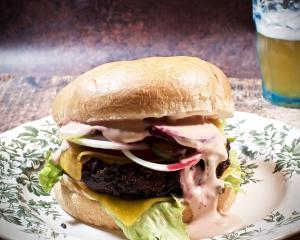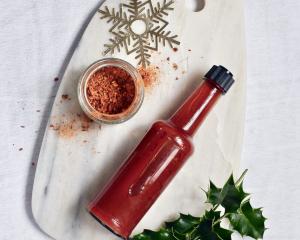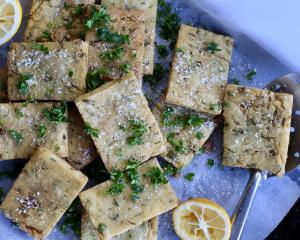Alison Lambert says she couldn't imagine life in the kitchen without eggs.
Whether it's eggs on toast, whisking up mayonnaise, enriching doughs or simply baking cakes, the simple egg never gets boring.
The seemingly endless number of dishes and the science behind how eggs do what they do demands respect.
I use only well-sourced eggs, as it not only benefits the hen but also improves your dish.
 Photos: Simon Lambert
Baked eggs with spinach and cream
Photos: Simon Lambert
Baked eggs with spinach and cream

Cooking eggs this way makes life so easy; you can get them prepped ahead of time, which is great for entertaining. You can also mix them up by adding ingredients of your choice.
Serves 4
Ingredients
butter for greasing 4 ramekin-type dishes
4 large good-quality eggs
40g fresh spinach, finely shredded
grating of fresh nutmeg
4 Tbsp cream
sea salt
freshly ground pepper
Good-quality toast to serve
Method
Preheat the oven to 200degC.
Lightly grease the inside of four ramekins with butter.
Place the shredded spinach in the base of the dishes, crack the eggs on top (one per dish), pour 1 Tbsp of cream per dish, and season with salt and pepper and a little grating of fresh nutmeg.
Bake in hot oven until the whites set and the yolks are still runny (8-10mins).
Serve hot with toast.
 Fried seasonal vegetables
Fried seasonal vegetables

Egg whites never go to waste. Apart from the obvious uses like pavlova and meringues, there are many cakes and desserts that require whites. However, a light and crispy batter is perfect to coat new-season vegetables.
Serves 4
Ingredients
2 litres neutral oil for frying
Batter
200g flour
100g rice flour
4 Tbsp olive oil
250ml cold water
2 egg whites
pinch salt
Vegetables
4 small silver beet or kale leaves
12 florets cauliflower and/or broccoli
1 fennel bulb, cut into thin slices
200g pumpkin or squash, sliced very thin
12 sage leaves
sea salt flakes for seasoning
Method
Place the flour in a large mixing bowl and make a well in the middle, add the oil and water and mix until batter consistency.
Whisk the egg white in a separate bowl until soft peaks form, and fold through batter until just combined. It doesn't matter if lumps or small blobs of egg white are visible.
Heat up a deep fryer or large deep-sided pot with oil until it reaches 175degC.
Line a baking tray with a cake rack over. This is for draining the vegetables.
Dip the vegetables into the batter a little at a time, drip off excess and carefully lower into fryer. The vegetables will cook at different times due to density.
Keep them turning in the oil, using a metal spoon or tongs. When they are golden and crisp, remove carefully and drain.
Continue until all the vegetables and sage leaves are cooked.
Season with salt and serve immediately.
 Fresh lemon curd
Fresh lemon curd

Yolks have many uses, such as mayonnaise, hollandaise and custard. They can also be used to glaze, bind and thicken many dishes. I have chosen a family favourite: irresistible fresh lemon curd.
Makes a 330ml jar
Ingredients
1½ cups caster sugar
220g butter, diced
finely grated zest of 1 lemon
1¼ cups lemon juice (about 6 juicy lemons), strained
6 large eggs
Method
You can either do this in a bowl over a double boiler for a more controlled way of cooking the curd, or you can use a heavy-based saucepan and cook it directly over the heat. Choice is up to you! I am going straight on the heat so just adapt method to suit.
To make the curd: Place the sugar, butter, lemon juice and lemon zest in a saucepan and warm through gently over a low heat until the butter has melted.
Whisk the eggs together in a separate bowl and slowly pour into the lemony butter mixture. You must stir all the time and you cannot speed up this part of the recipe. It must be over a gentle heat or the egg yolks will cook.
Stir constantly until the mixture thickens enough to coat the back of a spoon. It will be ready when the curd coats the back of a spoon and stays when you run your finger across the back of the spoon.
Remove from the heat immediately, strain and pour into sterilised jars. Seal.
Will keep in the fridge for at least a month.













